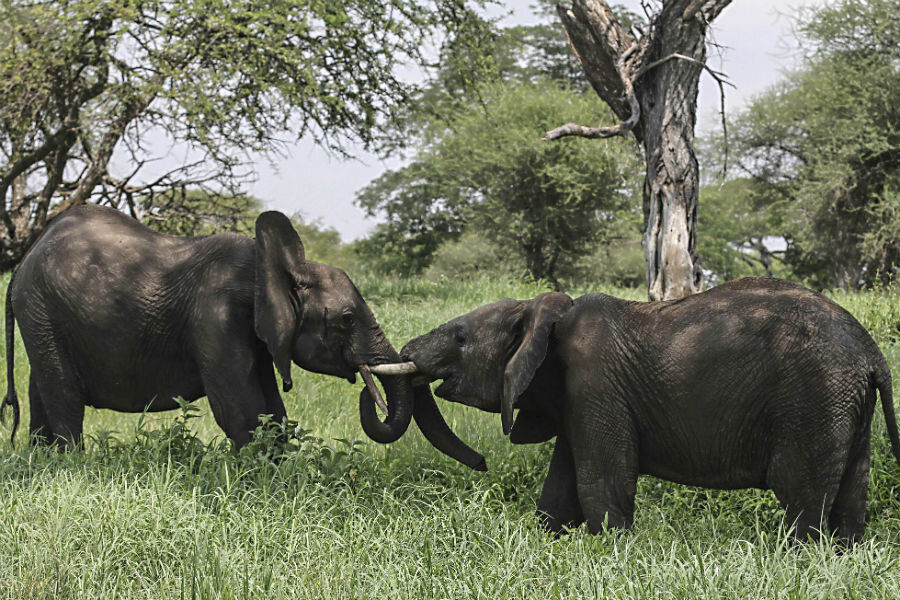Can DNA technology help put a stop to elephant poaching?
Loading...
Scientists are now better able to pinpoint elephant poaching hotspots in Africa, thanks to a pioneering study.
By matching the DNA fingerprints of seized elephant ivory to DNA profiles from the dung of elephants living throughout the continent, scientist were able to establish the origin of illegal ivory to just two areas in Africa.
The data, published in Science, shows that tusks of forest elephants were most likely to come from the central African Tridom region that covers the Central African Republic, Gabon, and the Republic of Congo. Tusks from savannah elephants focused on the border area between Tanzania and Mozambique.
Scientists hope that knowing the primary areas where elephants are poached could help fight ivory trafficking at its source, by increasing law enforcement.
"When you're losing a tenth of the population a year, you have to do something more urgent – nail down where the major killing is happening and stop it at the source," Samuel Wasser, co-author of the report from the University of Washington, said in a statement.
According to the University of Washington's Center for Conservation Biology, as many as 50,000 elephants could be killed for their ivory every year, with only approximately 400,000 elephants remaining. Conservationists warn African elephants could be virtually extinct in the next decade. The trade in ivory was outlawed in 1989, but poaching continues and remains a challenge to African governments and conservationists.
Identifying the origins of seized ivory helps reveal where to focus law enforcement as well as tactics used by ivory poachers and traders.
"Hopefully our results will force the primary source countries to accept more responsibility for their part in this illegal trade, encourage the international community to work closely with these countries to contain the poaching, and these actions will choke the criminal networks that enable this transnational organized crime to operate," Wasser told the University of Washington.
Speaking to Agence France-Presse, Interpol adviser Bill Clark said that the study will help Interpol to understand the structure and the dynamics of the transnational organized crime syndicates behind it. "It's part of a puzzle. Looking, finding, identifying the origin of the ivory is helping us piece together that puzzle." Mr. Clark said.
This new study was developed out of research from Alfred Roca in 2012. Roca, an assistant professor from the University of Illinois, discovered that forensic tools can be used to catch poachers.
Robust conservation efforts to fight wildlife poaching have been implemented in some African countries and awareness created to reduce ivory demands. On Friday, the US government destroyed more than one ton of illegal ivory before crowds in New York’s Times Square, in a move to show its commitment on the crackdown of the illegal trade.





